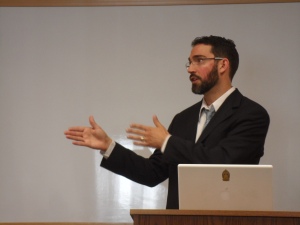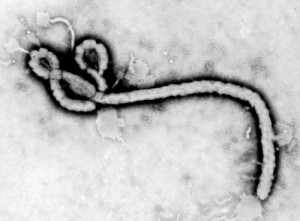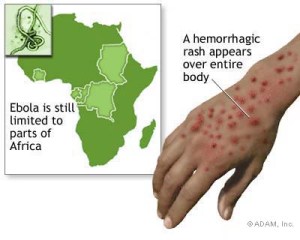With the recent attention given to the ALS Icebucket Challenge, I thought it would be beneficial to consider Amyotrophic Lateral Sclerosis from a Chinese medicine perspective.
 Ah…the ALS Icebucket Challenge: it’s got everyone from Justin Bieber to George W. Bush dumping buckets of ice-water on their heads; it’s got California environmentalists annoyed because people are wasting water in a drought; and it’s got your—or at least my—Facebook friends divided over whether this awareness-raising publicity stunt is “played out,” “narcissistic,” or “really important.” Before I begin my analysis of ALS from a Chinese medicine perspective, allow me to state the following:
Ah…the ALS Icebucket Challenge: it’s got everyone from Justin Bieber to George W. Bush dumping buckets of ice-water on their heads; it’s got California environmentalists annoyed because people are wasting water in a drought; and it’s got your—or at least my—Facebook friends divided over whether this awareness-raising publicity stunt is “played out,” “narcissistic,” or “really important.” Before I begin my analysis of ALS from a Chinese medicine perspective, allow me to state the following:
- I am not suggesting that Chinese medicine cures ALS.
- I am not suggesting that you should ignore your doctor’s advice or stop conventional treatment if you have ALS.
- The following is a theoretical discussion based on a synthesis of ancient Chinese medical literature and modern biomedical research. It is not based on clinical experience with ALS.
What is ALS?
According to the ALS Association, Amyotrophic Lateral Sclerosis, or “Lou Gehrig’s Disease,” is “a progressive neurodegenerative disorder that affects nerve cells in the brain and the spinal cord” (ALSA.org). As these nerves die, those who suffer from the disease gradually lose muscle control, until complete paralysis—and ultimately, death—results.

ALS as Atrophy Syndrome
The Chinese character, wěi 萎, meaning “atrophy” or “wilting,” is composed of two parts. The upper part, cǎo 艹, means “grass” or “plant,” while the lower part, wěi 委, means “to fall” or “to hang down” (Scheussler, 512). As I have mentioned in previous posts, I am not a Chinese language specialist, but the concept of a wilting plant seems an accurate and poetic description of the physical atrophy commonly seen in patients with neurodegenerative disorders like ALS.
Atrophy syndrome was first mentioned in chapter 44 of the Huáng Dì Nèi Jīng Sù Wèn, one of the foundational texts of Chinese medicine. What follows is a complex discussion about the various manifestations of atrophy, which requires a rather advanced knowledge of Chinese medical theory to understand. The clinical result of this discussion is that atrophy syndrome is primarily related to dysfunctions involving the yáng míng 阳明, the chōng mài 冲脉, the dài mài 带脉, and the dū mài 督脉: several of the channels that traverse the body. Elsewhere in the same chapter, the yáng míng 阳明 is described as the sea of the internal organs, and the chōng mài 冲脉 is described as the sea of the acupuncture channels (Huáng Dì Nèi Jīng Sù Wèn Chapter 44). According to another classical text of roughly the same time period, the dài mài 带脉 encircles the body at the waist, while the dū mài 督脉 travels up the inside of the spinal column before entering the brain (Nán Jīng Chapter 28).
Chapter 44 of the Huáng Dì Nèi Jīng Sù Wèn gives a very specific acupuncture treatment protocol for atrophy syndrome: the use of spring (yíng 潆) points and transport (shū 輸) points on the affected channels. Modern research suggests that the channels are closely related to interstitial connective tissue planes and that acupuncture points occur at the junctions thereof (Langevin & Yandow, 2002; Ahn, 2010). According to researchers, this interstitial connective tissue “constitutes a continuous network enveloping all limb muscles, bones, and tendons, extending into connective tissue planes of pelvic and shoulder girdles, abdominal and chest walls, neck, and head” (Langevin & Yandow, 2002). This potential link between acupuncture and the connective tissue makes it an ideal adjunct therapy in cases of ALS.
Shun-fa Jiao, a modern Chinese practitioner who has extensively studied the relationship between acupuncture and neurology, states that “[The term] ‘joint junctions,’ [mentioned in chapter 1 of the Huáng Dì Nèi Jīng Líng Shū] refers to the places where the neurofilaments of the anterior lateral sulcus and posterior spinal cord cross to form anterior and posterior roots, and then cross again to form a spinal nerve. After several of these crossovers, they become the nerves that travel throughout the body” (Jiao, p. 57-58). If Jiao’s hypothesis is correct, it would provide even stronger support to the potential benefits of acupuncture in the treatment of ALS.
ALS and the Sea of Marrow
“The brain is the sea of marrow…when the Sea of Marrow is insufficient, it results in revolving of the brain, noises in the ear, weakness of the legs, dizziness with spots, and the eyes without vision” –Huáng Dì Nèi Jīng Líng Shū, Chapter 33 (Wu, p. 133).
In Chinese medicine, the Sea of Marrow (suǐ hǎi 髓 海) is a rather curious term. According to Shun-fa Jiao, whose work with acupuncture and neurology was mentioned above, “Marrow (suǐ 髓) illustrates the changes the channels undergo after they enter the spinal canal” (Jiao, p. 68). Based on this description, and the one given in Chapter 33 of the Huáng Dì Nèi Jīng Líng Shū, a biomedical definition of the Sea of Marrow would likely encompass the brain, the spinal cord, and the cerebrospinal fluid. From this perspective, it should be obvious that the Sea of Marrow plays a large role in neurodegererative diseases like ALS. Clinically, there are two points specific to the Sea of Marrow: Du-16 and Du-20. These two points are both on the dū mài 督脉, which was mentioned above as one of the channels typically affected in atrophy syndromes.

Bridging Two Worlds: Integrating Acupuncture and Biomedical Treatment
As of now, there is no cure for ALS. The only therapy that exists is a pharmaceutical drug called Riluzole. Unfortunately, Riluzole only extends the patient’s lifespan by 2-3 months, and it often causes undesirable side effects like nausea and fatigue (Skidmore, 2007). Without an effective biomedical cure, acupuncture and Chinese medicine must be considered as potential adjunct therapies to manage the symptoms of ALS and to reduce the side effects of Riluzole.
In a recent study, researchers found that integrative therapies, including acupuncture and Chinese medicine, improved subjective symptoms in patients. These patients reported feeling more comfortable, slightly happier, and more energetic; some patients reported more restful sleep and improved appetite as well (Pan, 2013). This study suggests that acupuncture and Chinese medicine have the potential to play a supportive role in conventional ALS treatment, both to improve overall quality of life and to reduce the side effects of Riluzole treatment.
In another study, patients were treated with the following acupuncture points: Spleen-3, Lung-9, Heart-8, and Lung-10 (Lee & Kim, 2013). Do you recall the earlier statement from the Nèi Jīng that one should treat the spring (yíng 潆) and transport (shū 輸) points in cases of atrophy? Spleen-3 and Lung-9 are transport (shū 輸) points, and Heart-8 and Lung-10 are spring (yíng 潆) points! In addition to performing acupuncture, Spleen-3 and Lung-9 were connected to electrical stimulation for 15 minutes at a frequency of 100Hz (Lee & Kim, 2013). The researchers found that this point protocol had a significant influence on SpO2—or oxygen saturation levels—leading them to conclude that acupuncture treatment could positively influence inspiration (Lee & Kim, 2013). Inspiration (aka inhalation), is an active process facilitated by muscular contraction, primarily of the diaphragm and intercostal muscles (Tamarkin, 2011). This finding is particularly noteworthy, since the progressive neuromuscular degeneration of ALS ultimately leads to the failure of the respiratory system.
Other studies suggest that electrical stimulation performed on Stomach-36 elicits anti-inflammatory effects in animal models of ALS (Yang, 2010; Jiang, 2011). Inflammation commonly accompanies the neuronal death that occurs in ALS patients, and many researchers are currently seeking ways to reduce the inflammation that is associated with the disease (ALSA.org/research). If acupuncture can potentially reduce inflammation in ALS patients, why not incorporate this safe and effective therapy into an integrative treatment strategy?
Clinical Protocols and Beyond
In this paragraph, I’d like to take a brief moment to address the acupuncturists who might be reading this article. Hopefully, the discussion presented here has already inspired you to consider how you might treat this disease in your clinic. If not, consider incorporating the information from classic texts and modern research into a comprehensive clinical protocol. At minimum, use Lung-9, Spleen-3, Heart-8, Lung-10, Du-16, Du-20, and Stomach-36. Of course, this protocol is extremely basic, and must be modified according to the patient’s presentation (including tongue and pulse). Consider using other points on the yáng míng 阳明 and dū mài 督脉 based on the patient’s specific symptoms.
A word of caution: while we can learn much from an integrative approach, we must always seek to explain biomedical terms and diagnoses with Chinese medicine terminology—not the other way around!
Herbal Approaches
While much of this article has focused on acupuncture protocols for the treatment of ALS, I’d like to take a brief moment to mention some potential herbal therapies. Of course, before undertaking any course of herbs, consult your doctor or primary healthcare professional.
Based on the symptoms of muscular atrophy, fatigue, and respiratory failure, a comprehensive Chinese medicine approach to ALS treatment would likely involve herbs that boost the qì of the Lung and Spleen. According to Chinese medical theory, the Spleen rules the muscles (Huáng Dì Nèi Jīng Sù Wèn Chapter 5). Note: the term Spleen (脾 pí) refers to a holographic representation of biological and physiological processes, not only to the organ itself. The respiratory issues that occur as the result of ALS suggest that Lung qì deficiency also plays a role in the etiology of the disease. Chinese herbal medicine works best when the formula is tailored to meet the specific needs of the patient, but here are a few potential starting points:
Four Gentlemen Decoction: the most basic formula to fortify the Spleen qì.
Li Zhong Wan: slightly warmer than Four Gentlemen; also used to fortify the Spleen qì.
Shi Chuan Da Bu Wan: fortifies both the qì and blood; includes Huang Qi (Astragalus root) to support the Lung and Rou Gui (Cinnamomi Cortex) to support the Kidney.
Cordyceps: fortifies the Lung and Kidney; helps maintain respiratory health.
Sheng Jiang, Zi Su Ye, Ban Xia, Da Zao, and Gan Cao: a simple formula to ease the nausea that may accompany Riluzole treatment.
Closing Thoughts
Obviously, acupuncture and Chinese medicine have the potential to play an important role as an adjunct therapy to biomedical treatment for patients suffering from ALS. The conventional biomedical treatment for this disease extends life by up to three months, but may produce undesirable side effects like nausea and fatigue. Why not pursue an integrative approach, so that the patient can be as comfortable as possible throughout the duration of the disease?
References
Huáng Dì Nèi Jīng 黄帝内经
Sun-fa Jiao, (2012) Nine Needles and Twelve Yuan-Source Points
Axel Schuessler, ABC Etymological Dictionary of Old Chinese
Linda Skidmore, (2007) Mosby’s Drug Guide for Nurses, 7th edition
Paul Unschuld, (1986) Nan-Ching: The Classic of Difficult Issues
Jing-nuan Wu (1993) Ling Shu: Or the Spiritual Pivot
© Dr. Phil Garrison and Dr. Phil’s Chinese Medicine Blog, 2014. Unauthorized use and/or duplication of this material without express and written permission from this blog’s author and/or owner is strictly prohibited. Excerpts and links may be used, provided that full and clear credit is given to Dr. Phil Garrison and Dr. Phil’s Chinese Medicine Blog with appropriate and specific direction to the original content.



